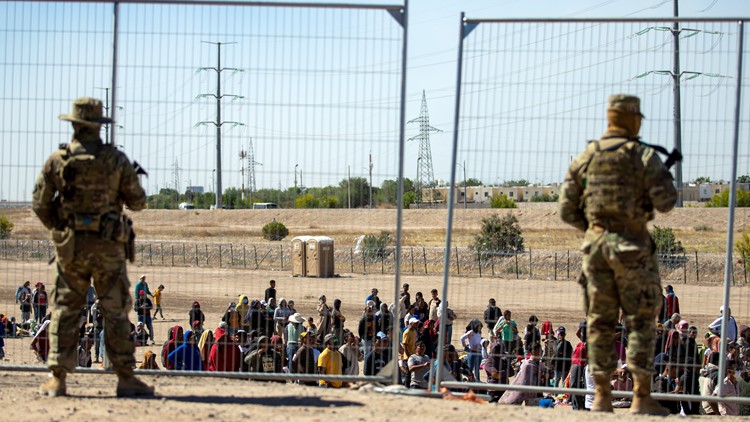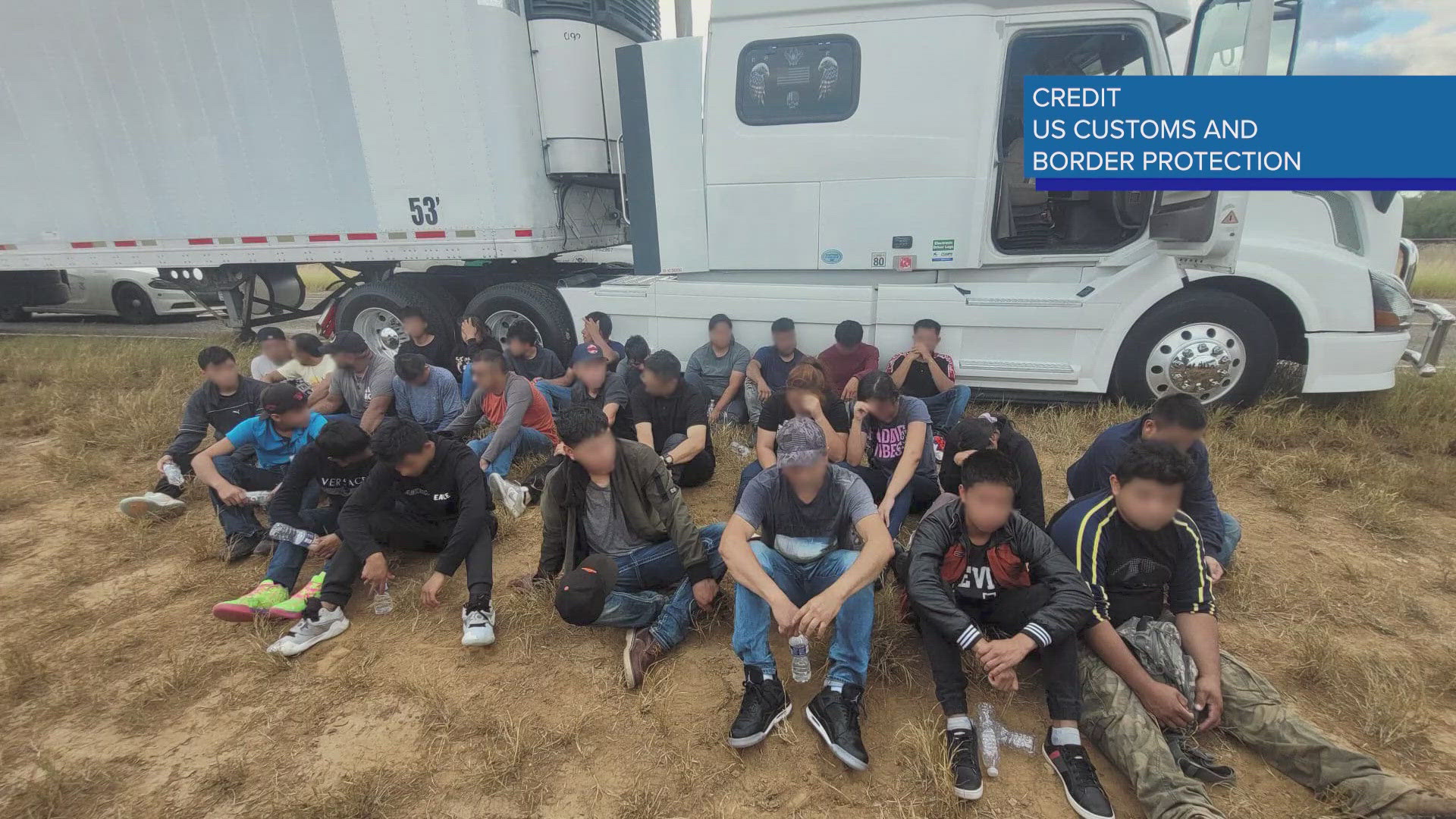Migrants with disabilities can’t access the asylum system the way others can, according to a complaint that advocacy organizations filed against the U.S. Department of Homeland Security earlier this week.
Most migrants who want to be considered eligible for asylum have to schedule appointments at ports of entry along the U.S-Mexico border through the CBP One phone application.
The app has undergone several updates since its introduction in 2020 because of software glitches. But the app is still inaccessible to migrants with a range of disabilities, including those who are blind, deaf, have mobility issues, and have intellectual disabilities, according to the complaint, filed by the Texas Civil Rights Project and Civil Rights Education and Enforcement Center.
This is partially because they have to have to log into the app every day over monthslong spans to actually receive an appointment, according to the complaint.
The department did not respond to immediate request for comment.
“I just don’t think they’re prioritized,” said Kassandra Gonzalez, a staff attorney at the Texas Civil Rights Project. “Sometimes, this app is the only way for them to access asylum eligibility. It speaks to the bigger problem of creating roadblocks, and how those roadblocks harm vulnerable migrants, like those with disabilities.”
Border strategies have become more contentious in past months. The state and federal government have clashed over authority, including during the standoff between U.S. Border Patrol agents and state forces in Eagle Pass this January.
“This is the most vulnerable population, the most overlooked population,” said Kate Thorstad, staff attorney at the Civil Rights Education and Enforcement Center, a legal organization that provides legal assistance to those with disabilities. “Migrants with disabilities just face extra burdens and threats to their health and lives at every turn.”
A small, but vulnerable, population
On the ground, the population size of disabled migrants is uncertain, and “no official international statistics exist” on how many migrants have disabilities, according to the Migration Data Portal. Around 15% of the world’s population has a disability, according to the World Health Organization.
But for workers on the ground, they see a disproportionate amount of those seeking help also having disabilities — partially because of “the rate of physical violence asylum seekers are fleeing,” said Nicole Elizabeth Ramos, border rights project director for Al Otro Lado, which provides support to refugees.
“When we're dealing with asylum seekers that are victims of torture by state governments, by organized crime, they’re coming with significant mental health issues will make it difficult for them to navigate a complicated app like CBP One,” Ramos said.
Because the app isn’t accessible to disabled migrants, it’s in violation of a federal law, according to the complaint. Under Section 508 of the Rehabilitation Act of 1973, federal agencies have to make sure technology allows individuals with disabilities to access and use it.
Even if the app’s software is made more accessible for some, there are others — especially those who have mobility issues — for whom the app will “never be accessible,” Thorstad said.
“For them, there must be an alternative means,” she said. “There has to be another way.”
This includes showing up at a port of entry without an appointment and being processed by officers there, she said.
Finding accommodations
Felicia Rangel-Samponaro runs The Sidewalk School for Asylum Seekers in Matamoros and Reynosa, two cities just across the border from the Rio Grande Valley in Texas. Migrants with disabilities and their families often need accommodations outside of the app before they can even consider starting to use it, she said.
One blind man traveled to the border alone and was dropped off at the school two weeks ago, she said.
“Accommodations have to be made, even on the Mexico side, outside of the app, just getting this guy somewhere safe to live, and eat, and be OK,” Rangel-Samponaro said. “Once that’s squared away, it then moves over to: ‘You have to use the app every day. Did you know that?’”
“But he's not able to use the app at all,” she added. “Even if we got someone who was kind enough to help him out for a week, he or she may be gone the following week, so then he's stuck again.”
Rangel-Samponaro has seen his story repeat over and over: a man with schizophrenia who couldn’t manage logging in every day. A woman with facial paralysis who couldn’t use the app’s facial recognition software. A family with a child who had autism, who couldn’t use that software, either. And exceptions exist, but they’re not easy to get, she said.
“It's a whole process in order to prove to our U.S. government that this person cannot use the app. And while we're going through this long process of proving this to the U.S. government — this person with a disability is stuck,” she said.
“If you're disabled, you also cannot use this application. If anyone in your family, if your child is disabled in any type of way where they can't take the picture, then this application is not for you either,” she added. “You are literally stuck.”
The Texas Tribune is a nonprofit, nonpartisan media organization that informs Texans — and engages with them — about public policy, politics, government and statewide issues.
>MORE BORDER COVERAGE:



